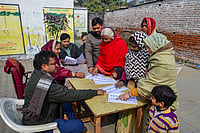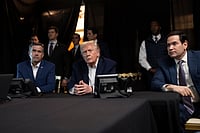Days after five Mexican tourists and a Nepali pilot were killed in a helicopter crash while returning from viewing Himalayan peaks, including Mount Everest, Nepal's aviation regulator has banned helicopters from conducting "non-essential" flights, including those for sight-seeing. Since 2000, there have been 18 air crashes in the country, resulting in the deaths of 350 people before the recent crash.
“Non-essential flights like mountain flights, external load operations (sling flights) and showering of flowers by helicopters (will) be restricted till September,” the Civil Aviation Authority of Nepal (CAAN) said in a Twitter post late on Wednesday.
Helicopter crashes in Nepal
The Himalayan nation, home to eight of the world’s 14 tallest mountain peaks including Mount Everest, has a history of air crashes, as many airlines fly to small airports in remote hills and near peaks often shrouded in clouds.
In January 2023, a Yeti Airlines ATR 72 aircraft crashed in Pokhara, killing all 72 people onboard. The crash marked Nepal's worst air crash since 1992 when a Pakistan International Airlines plane crashed in Kathmandu, killing 167 people.
In May 2022, a Yeti unit Tara Air's De Havilland Canada DHC-6-300 Twin Otter aircraft crashed 15 minutes after taking off from Pokhara, killing 22 people.
In February 2019, a helicopter crashed in bad weather in eastern Nepal, killing all seven people on board, including the tourism minister.
In March 2018, 51 of 71 people on a Bangladeshi airliner operated by US-Bangla Airlines died after the helicopter crashed in cloudy weather as it came in to land at the Nepalese capital's hill-ringed airport.


























